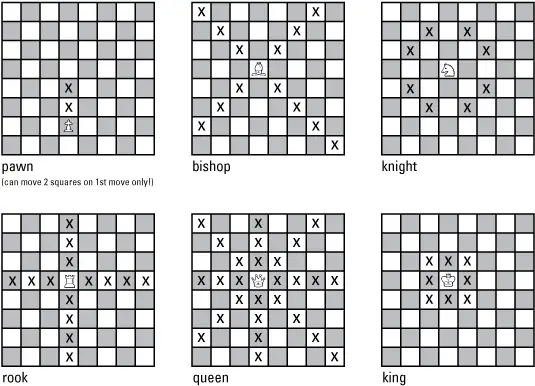Chess is a game that has captured the interest of people around the world for centuries.
While it is often considered a complex and intellectually demanding game, the process of learning chess can be both challenging and rewarding.
Here are some steps to help you learn and improve at chess.
The Challenge of Chess
Chess is a game that requires a combination of skills, including strategic thinking, spatial reasoning, and the ability to anticipate your opponent’s moves.
These elements can make learning chess a challenging endeavor for many people. However, the challenge of the game is also what makes it so rewarding to master.
Steps to Learn Chess
- Understand the Rules: The first step in learning chess is to understand the basic rules of the game. This includes how each piece moves, the objective of the game, and special moves like castling and en passant.
- Utilize Resources: There are numerous resources available to help you learn chess, including books, online tutorials, and chess apps. These resources can provide valuable insights into strategy, tactics, and the overall dynamics of the game.
- Practice, Practice, Practice: One of the most effective ways to learn chess is to practice regularly. Whether you’re playing against a computer or a human opponent, the more you play, the more you’ll become familiar with the game’s patterns and strategies.
- Study Strategy: Chess is a game of strategy, and studying various opening, middlegame, and endgame strategies can significantly improve your play. Understanding concepts such as controlling the center, developing your pieces, and creating a plan can enhance your overall game.
- Analyze Your Games: After playing a game, take the time to review and analyze your moves. Identifying mistakes and missed opportunities can be a valuable learning experience and can help you improve your game.
- Enjoy the Process: It’s important to approach learning chess with a sense of enjoyment and curiosity. While the game can be challenging, it’s also a source of great satisfaction and intellectual stimulation for millions of players around the world.
What Are The Basic Rules Of Chess?
The basic rules of chess govern the play of the game, which is a two-player abstract strategy board game.
Each player controls 16 pieces of six types on a chessboard, and the objective is to checkmate the opponent’s king, which occurs when a king is threatened with capture and has no escape. Here are the basic rules:
- Setup: Each player starts with 16 pieces: one king, one queen, two rooks, two knights, two bishops, and eight pawns. The pieces are placed on their respective squares on the chessboard
- Moving pieces: Each piece has its own unique movement rules. Pawns move forward one or two squares on their first move, and one square at a time after that. Rooks, bishops, knights, and queens move in various ways, and each piece can only move to a square that is unoccupied or occupied by an enemy piece.
- Capturing: Pawns can capture other pieces diagonally one square ahead of their starting position. Other pieces can capture enemy pieces by moving to their square and replacing the captured piece.
- Check and checkmate: A player is in check when their king is threatened with capture. Checkmate occurs when a king is threatened with capture and has no escape.
- Turns: Players alternate turns, with the white player moving first, followed by the black player. Each player takes one move at a time, and it is not legal to skip a move even when having to move is detrimental.
- Draws: A game can end in a draw if the same exact position is repeated three times, or if 50 consecutive moves have been played without a player moving a pawn or capturing a piece.
- Resignation: A player can resign at any time during the game, which results in the loss of the game.
Remember that each piece has its own strengths and weaknesses, and understanding how to use them effectively is the key to winning at chess.
What are the different types of chess pieces and their moves?
In chess, there are six different types of pieces, each with its own unique way of moving. Here are the types of chess pieces and their moves:
- King: Moves one square in any direction.
- Queen: Moves any number of squares diagonally, horizontally, or vertically.
- Rook: Moves any number of squares horizontally or vertically.
- Bishop: Moves any number of squares diagonally.
- Knight: Moves in an ‘L-shape,’ two squares in a straight direction, and then one square perpendicular to that.
- Pawn: Moves one square forward, but on its first move, it can move two squares forward. It captures by moving one square forward diagonally.

Each player starts with 16 pieces: one king, one queen, two rooks, two bishops, two knights, and eight pawns.
What are some common strategies in chess?
Some common strategies in chess include:
- Control the Center: Occupying the center of the board with pawns and pieces.
- Develop Pieces: Bringing out knights and bishops early and connecting rooks.
- King Safety: Castling to protect the king and keeping the king safe in the opening and middlegame.
- Pawn Structure: Understanding the importance of pawn structure in determining the character of the position.
- Piece Activity and Mobility: Placing pieces on active squares and maximizing their mobility.
- Endgame Principles: Understanding basic endgame principles such as king activity, pawn promotion, and piece coordination.
These strategies are essential for long-term planning and creating a favorable position. They complement tactical play, which involves short-term calculations and sequences of moves to achieve immediate objectives
Conclusion
In conclusion, while chess may not be easy to learn, it is certainly a game that is worth the time and effort. By understanding the rules, studying strategy, and practicing regularly, anyone can improve their chess skills.
The challenge of the game is part of what makes it so compelling, and the sense of achievement that comes from mastering this ancient game is truly unparalleled. So, embrace the challenge, enjoy the process, and let the game of chess enrich your life.


